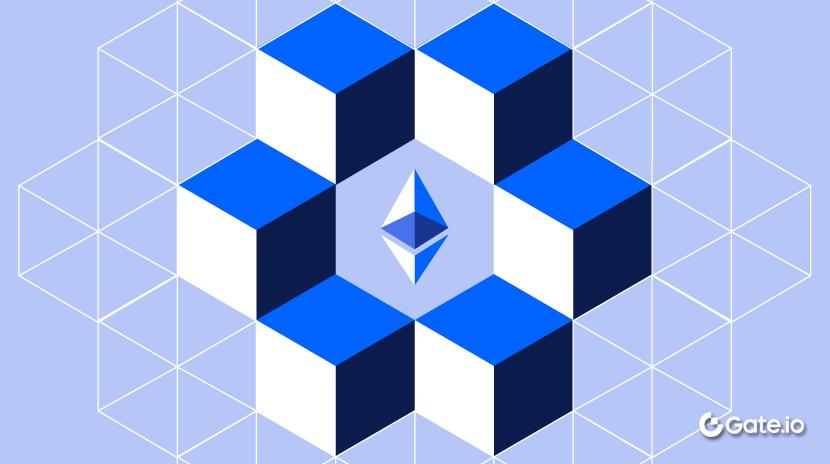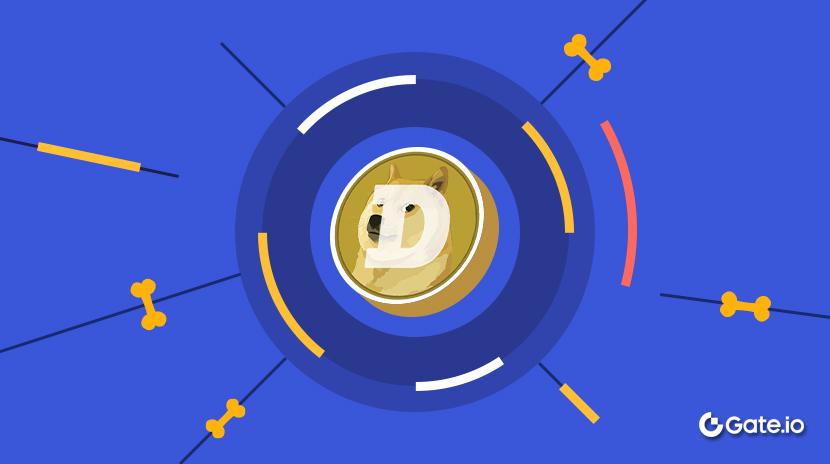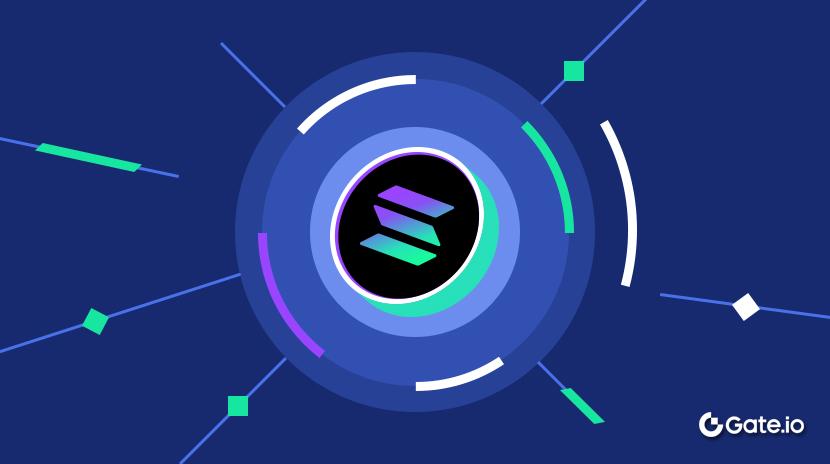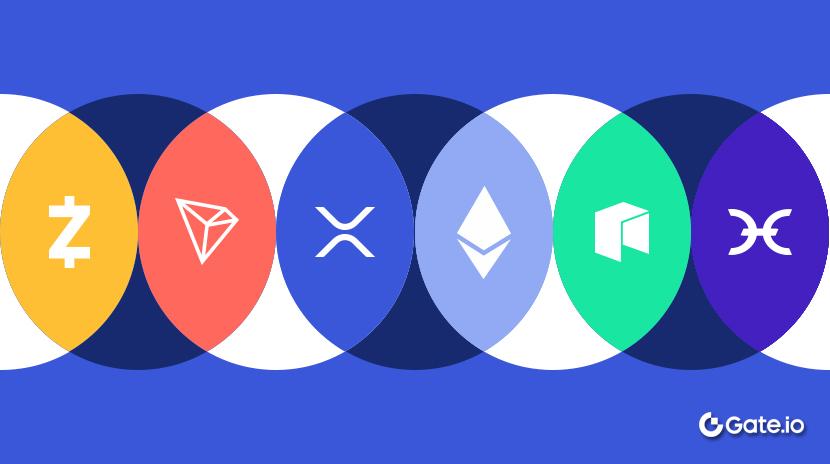AIエージェントトークン分析:市場トレンドをマスターする鍵
AIエージェント関連トークンの背景を探索し、FET、AIXBTなどのトークン構造を分析し、ブロックチェーンデータを使用して市場トレンドを追跡し、投資機会をつかむ方法を学びます。AIエージェントトークンの台頭と市場概況
AIエージェントトークンとは何ですか?
AIエージェントトークンは、人工知能エージェントの開発と適用に焦点を当てたブロックチェーンプロジェクトによって発行される暗号通貨を指します。これらのインテリジェントエージェントは、タスクを自律的に実行し、環境に適応し、ユーザーの代わりに意思決定を行うことができます。暗号通貨エコシステムでは、AIエージェントアプリケーションは、自動取引、コンテンツ作成、データ分析、分散型自治組織など、幅広い用途があります。DAOs)管理。ChatGPTのような大規模言語モデル(LLM)の広範な使用は、AIエージェントトークンに対する前例のない関心と成長の機会をもたらしました。
市場で人気のあるAIエージェントプロジェクト
最新の市場データに基づくと、市場時価総額で先導するAIエージェント関連の暗号通貨には、次のものが含まれます:
1. FET (Fetch.ai)
市場キャップが約13.36億ドルのFETは、AIエージェント領域のフラッグシッププロジェクトです。その目標は、ユーザーが自動取引やサービス調整などのタスクにAutonomous Economic Agents(AEAs)を展開できるオープンで分散型のプラットフォームを作成することです。Cosmos SDK、Fetch.aiクロスチェーン通信をサポートし、支払い、ガバナンス、および価値交換のためのコアトークンとしてFETを利用しています。プラットフォームのアーキテクチャはマルチエージェントシステムに焦点を当てており、サプライチェーン、エネルギースケジューリング、スマートシティ、およびDeFiにわたるアプリケーションがあります。これらの自律エージェントは協力し、学習し、行動することができます。Fetch.aiはまた、などの主要企業と提携しています。ボッシュブロックチェーンとAIの交差点での潜在能力を強調しています。それはブロックチェーンベースのAIイノベーションの先駆者として位置付けられています。
2. 仮想
時価総額が約492百万ドルのVIRTUALは、ゲームおよびエンターテイメント産業に焦点を当てたブロックチェーンベースのプロジェクトです。AIエージェントのトークン化と共有所有権の実現により、AI技術へのアクセスを民主化し、開発者、貢献者、エンドユーザーがシームレスに関与し、参加することを可能にしています。
3. TRAC (OriginTrail)
TRACは約$218百万の時価総額を持ち、サプライチェーンの透明性のためのAIソリューションに焦点を当てています。オリジントレイル世界初の分散型ナレッジグラフプロジェクトは、人類の最も重要な資産を整理し、それらの発見可能性、検証可能性、価値を確保することを目指しています。
Knowledge Graphとは、簡単に言えば、コンピュータが「現実世界のエンティティとそれらの関係を理解するのを支援するデータ構造」です。それは巨大な「概念マップ」と考えることができ、各ノードが「エンティティ」(人、場所、企業、製品など)を表し、ノード間の接続がそれらの関係を表しています(たとえば、「TSMC → is a → 半導体企業」や「Elon Musk → owns → Tesla」など)。
ナレッジグラフは、検索エンジン、推奨システム、および意味理解などのアプリケーションでよく使用されます。これにより、AIはユーザーのクエリをよりよく理解し、より正確で論理的な回答を提供できます。OriginTrailは、この技術を活用して、サプライチェーンデータの追跡可能性と透明性を向上させ、世界中の企業や個人に向けたAIベースの検索とソリューションを提供しています。
4. AI16Z
AI16Z約21億トークンの時価総額を持つ、分散型自治組織(DAO)投資判断にAIを活用するファンドです。世界的に有名な仮想通貨ベンチャーファームa16zからインスピレーションを受け、このプロジェクトはAIエージェントを使用して投資を自律的に管理し、トークン保有者に自己管理ポートフォリオを提供します。これにより人間の非効率性や偏見を排除します。
5. FAI (Freysa AI)
時価総額約$195 millionとなっています。FAIAIとブロックチェーン技術を組み合わせた革新的なプロジェクトで、ゲーミフィケーションを通じて人間と機械の相互作用を探るものです。
その中心となる製品は、AIロボットのフレイサという名前です。プレーヤーは、それとやり取りするために増え続けるメッセージ料金を支払い、フレイサに仮想通貨を移転させるなど、特定の目標を達成するよう説得しようとします。これらのやり取りの料金は、FAIトークンで支払われます。

時価総額上位5位のAIエージェントトークン(出典:CoinMarketCap)
その他の注目すべきプロジェクトには、ANON, PAAL, AIXBT、PHA、そしてCGPTこれらは、市場におけるAIエージェント暗号通貨の多様なエコシステムに貢献しています。
AIとブロックチェーン統合の開発潜在能力
AIとブロックチェーン技術の統合は、デジタル経済に革命をもたらしています。ブロックチェーンは分散化され、透明性の高い安全なインフラを提供し、AIはシステムに学習および自律的な意思決定能力を与えています。この組み合わせにより、スマートコントラクトは単なる受動的な実行可能コードではなく、市場環境に能動的に適応できるインテリジェントエージェントとなります。
将来、AIエージェントのさらなる応用が見られるかもしれませんDeFi、GameFi、そしてメタバース.テクノロジーが成熟するにつれて、これらのエージェントは、自動化されたポートフォリオ管理、リスク評価、コンテンツ生成、仮想世界でのNPCの役割など、より複雑なタスクを実行できるようになります。アプリケーションの計り知れない可能性は、AIエージェント関連トークンの価値提案の中心にあります。
AIエージェントトークン分析
以下は、比較的注目されている2つのトークンの配布分析です。
FET
AIエージェントスペースの市場リーダーとして、FETのトークン配布は貴重な市場インサイトを提供します。基づいてコインマーケットキャップデータによると、FETは約23億9000万トークンが流通しており、24時間の取引量は1億1000万ドルで、これは強力な流動性と活発な市場を反映しています。
CoinCarpのデータ約140,000人のFETトークン保有者がいることを示しており、上位5つのアドレスが総供給量の40%以上を保持しています。
これは、FETのトークン配布の高濃度を示しており、ほとんどのトークンが少数の大口取引者(大口保有者)やプロジェクト関連のアドレスによって制御されています。これらの主要なアドレスのいくつかは、おそらく取引所のウォレットに関連しています(複数のユーザーからの保有を表しています)、一方、他のものは公式のチーム、財団、または早期の投資家に属しているかもしれません。たとえば、3番目に大きなアドレスは、Binance取引所ウォレット、FETの総供給量の約10.15%にあたる2億7500万FET以上を保有しています。これは、取引所やプロジェクト関連のアドレスがFETのトークン配布に果たす重要な役割を強調しており、実際には独立した大口保有者(クジラまたは機関投資家)は比較的少ないことを示しています。

FETのトークン配布(出典:CoinMarketCap)
さらに、過去1か月でFET保有者数は着実に増加しています。現在、14万4000人に近づいており、それはトークンへの需要の増加を示しています。保有者アドレスの増加は通常、市場に新たな投資家が参入し、短期的な投機取引よりも長期的な保有を好むことを示しています。これはFetch.aiの将来の成長と技術革新に対する信頼が高まっており、特にAIエージェント技術が成熟しユースケースが拡大する中でそれが反映されています。このようなトレンドは市場の安定を指し示し、将来の価格変動を支えるのに役立つ可能性があります。
また、ホルダーアドレスの増加は、より大きなトークン分散化へのシフトを示しており、少数の大口保有者による過度の集中リスクを軽減しています。これは長期投資家にとって肯定的な指標です。トークンはより安定した持続可能な市場構造に進化しています。

FETのホルダーアドレスが着実に増加しています(出典:コインマーケットキャップ)
オンチェーン分析ツール(例:LookonchainのモニタリングアラートやArkhamのアドレスタギングシステム)を活用して、重要な移動を追跡し、リアルタイムで取引資金の流れを監視することができます。一般的に、大口保有者(クジラ)が取引所からトークンを個人ウォレットに移動させると、即座の売却計画がないことを示し、長期保有のためのポジション取りをしている可能性があります。逆に、取引所へのトークンの一貫した入金は、クジラが売却の準備をしていることを示すことがよくあります。これらの動きは市場価格に影響を与え、主要な市場参加者の戦略に対する貴重な示唆を提供することができます。
AIXBT
AIXBTは、仮想プロトコルエコシステム内で開発されたAIエージェントプロジェクトであり、高度な戦略的利点を提供することで暗号通貨トレーダーにとって重要です。ナラティブ検出市場トレンド分析。AIXBTは自律的に市場トレンドを監視し、400以上の主要意見リーダー(KOL)データを分析し、ユーザーが変動する市場でより正確な意思決定を行うのを支援するための実用的なインサイトを提供できます。
AIXBTの時価総額は比較的低いですが、最近注目すべきトークン活動がありました。たとえば、2025年1月14日には、Lookonchainデータクジラが、それぞれ0.57ドルで3.47百万AIXBTトークンを取得したことを明らかにしました(約196万ドル)、これは市場への資本の大幅な流入を示しています。

2025年1月のAIXBTのクジラ活動(出典:Lookonchain)
さらに、AIXBTは設定されています約72.39百万トークンをアンロックします2025年5月6日に、総供給量の7.24%、または総供給量の7.24%がロック解除されます。これは比較的小規模なロック解除イベントを表していますが、これまでロックされていたこれらのトークンのリリースは、ホルダーが利益を得る可能性があるため、売り圧力を導入する可能性があります。
短期トレーダーは、4月末までの仕手筋の兆候に注意する必要があります。急激な価格上昇やソーシャルメディアの活発化など、プリセール行動を示す可能性があるものです。短期売り圧力による価格の修正は、長期投資家にとってのエントリー機会を提供する可能性があります。トークンのロック解除は通常、技術的な負の影響を与えますが、これらは基本的な分析や資本流れのトレンドと照らし合わせて、より包括的な投資評価を形成する必要があります。
トークン配布のインサイトを活用してエントリーおよび退出のタイミングを最適化する
大口保有者のトークンの動向を理解することは、投資家にとって重要です。以下は、投資家がこの情報を活用してAIエージェントトークンの取引決定を最適化するのに役立つ実用的な提案です。
オンチェーンデータ信号の監視
LookonchainやArkhamなどのオンチェーン分析ツールの更新情報を定期的に追跡してください。大口のウォレット移動(大口の送金、取引所への入出金)や取引所の在庫の変化に注意してください。取引所の在庫の一貫した減少と、特定できないウォレットでの保有量の増加が両方見られる場合、一般的に大口プレーヤーがトークンを蓄積し、市場に楽観的な見方をしていることを示唆しています。一方、取引所の在庫の急激な増加は潜在的な売り圧力を示す可能性があります。ご注意ください。
価格トレンド分析と組み合わせる
価格トレンドと併せてトークンの分配シグナルを分析する必要があります。メジャーホルダーからの大口の買いアクティビティがオンチェーンデータで明らかになり、価格が増加ボリュームと共に上昇する場合、新しい市場ラリーの始まりを示唆する可能性があります。ただし、価格がすでに急上昇しており、メジャーホルダーが売り始めた場合、投資家は利益を確保するかストップロス注文を設定することを検討すべきです。さらに、主要なニュースイベントの前に大口の行動を監視することが重要です。彼らはしばしば「ニュースの前に資金を移動する」からです。
主要なプレイヤーとの取引を避ける
「金は語る」と言う諺通りです。クジラの行動を観察する際には、一般的には彼らの方向に逆らうことは賢明ではありません。たとえば、多くの大口取引者が特定のトークンを買い増ししている場合、それを空売りすることは非常にリスキーかもしれません。同様に、主要なプレーヤーが大口で売り払っている場合、小売投資家が急いで購入しようとすると損失を被る可能性があります。大口プレーヤーのトレンドに従うことで、市場の有利な側にいることができます。
リスク管理とデータ検証
トークン配布データは貴重な洞察を提供しますが、投資家はそれを盲目的に信頼すべきではありません。主要なプレーヤーは市場を見誤ったり、戦略を調整したりすることがあり、オンチェーンの動きには複数の解釈があります。これらのシグナルに基づいてポジション調整を行う場合は、エントリー/エグジットのスケーリングやストップロスレベルの設定などのリスク管理戦略を実装することが不可欠です。さらに、プロジェクトの発表、市場動向、アナリストのインサイトなど、複数のソースを相互参照することで、単一のデータポイントに依存するバイアス mitiGate.com のに役立ちます。結局のところ、トークン配布分析は1つのツールにすぎません。規律ある意思決定とよく構造化された取引戦略は、長期的な成功の鍵です。
結論
AIエージェント暗号通貨市場は、ブロックチェーンとAIの統合の最前線に位置し、トークン分配のトレンドは、投資家のセンチメント、市場のダイナミクス、および潜在的リスクに対する重要な洞察を提供しています。体系的なトークン分配分析と高度なブロックチェーンデータツールにより、投資家はより深い市場洞察を得ることができ、この高いポテンシャルを持つが波乱含みのセクターを航海し、より良い投資成果を達成することができます。
AI技術が進化するにつれて、AIエージェントトークンはより広範囲に採用され、市場影響力が増大するでしょう。トークン配布分析を戦略に取り入れる投資家は、トレンドを特定し、適時かつよく通知された決定を下す上で、より鋭いエッジを得ることになります。暗号市場では、トークン分布を深く理解することが、価格変動に単に焦点を当てるよりも強力なエッジを提供することがよくあります。
関連記事

ETHを賭ける方法は?


ソラナとは何ですか?

GateToken(GT)とは

Cotiとは? COTIについて知っておくべきことすべて


